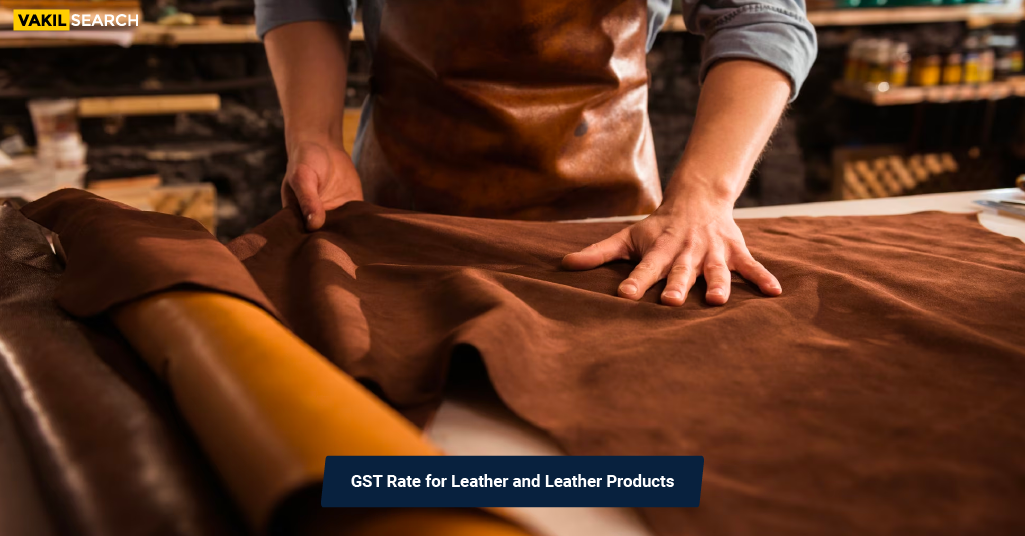Confused by leather GST? Untangle rates for raw hides, garments, bags & more! 5%, 12%, 18% explained.
From hides to handbags, the GST spotlight shines on leather! Unravel the rates set for India’s leather industry, starting July 1st.
Objectives of GST Rate for Leather and Leather Products
The Goods and Services Tax (GST) rate for leather and leather products in India was implemented with a multitude of objectives in mind. Here’s a breakdown of the key goals:
- Boosting the Leather Industry:
- Harmonization of Taxes: Replacing the complex pre-GST regime with a unified tax structure aimed to streamline operations and reduce compliance burden for leather businesses.
- Improved Competitiveness: By lowering the overall tax incidence on finished leather goods compared to pre-GST levels, the intention was to make Indian leather products more competitive in the global market.
- Promoting Exports: Reduced tax burden on exports could potentially make Indian leather products more attractive to international buyers, leading to increased export earnings.
- Generating Revenue:
- Broadening the Tax Base: Bringing previously unorganized sectors of the leather industry under the GST net aimed to expand the tax base and generate additional revenue for the government.
- Combating Tax Evasion: The formalization of the leather industry through GST registration could help curb tax evasion and leakage, leading to increased tax collections.
- Ensuring Fair Taxation:
- Classification of Products: Categorizing different leather products into distinct GST rate slabs (5%, 12%, 18%, and 28%) aimed to ensure fair and equitable taxation based on the value and essentiality of the goods.
- Input Tax Credit Mechanism: The availability of input tax credit allows manufacturers to claim credit for taxes paid on inputs used in the production process, reducing the overall tax burden and promoting efficiency.
- Promoting Transparency and Traceability:
- GST Returns Filing: The requirement for filing GST returns brings transparency to the leather industry, enabling better monitoring and tracking of production and trade activities.
- Electronic Invoicing: The implementation of e-invoicing in the leather industry could further enhance transparency and traceability, reducing opportunities for tax evasion and fraud.
It’s important to note that the effectiveness of these objectives in achieving their intended outcomes is a subject of ongoing debate and analysis. The impact of GST on the leather industry has been mixed, with some segments experiencing growth while others facing challenges. However, the overall goals of the GST rate structure for leather and leather products remain focused on boosting the industry, generating revenue, ensuring fair taxation, and promoting transparency.
HSN Code for Leather and Leather Products
- Raw Hides and Skins (HSN Code: 4101):
- Hides and skins of bovine (including buffalo) animals
- Tanned or Dressed Hides and Skins (HSN Code: 4102):
- Whole hides and skins, full grains, unsplit; grain splits
- Leather Further Prepared after Tanning or Crusting (HSN Code: 4103):
- Of bovine (including buffalo) animals
- Of equine animals
- Other leather
- Leather Goods (HSN Code: 4202):
- Trunks, suitcases, vanity cases, etc.
- Handbags, whether or not with shoulder straps
- Articles of a kind normally carried in the pocket or handbag
- Saddlery and harness for any animal
GST Rate for Leather, Skins and Rawhides
The GST rate for leather, skins, and rawhides in India depends on the specific type and level of processing. Here’s a breakdown:
5% GST:
- Raw hides and skins of bovine (including buffalo) or equine animals, not further prepared after drying, salting, or liming. (HSN code: 4101)
- Raw skins of sheep or lambs, not further prepared after drying, salting, or liming. (HSN code: 4102)
- Other raw hides and skins, not further prepared after drying, salting, or liming. (HSN code: 4103)
12% GST:
- Leather material further prepared after tanning or crusting, including parchment-dressed leather, of bovine (including buffalo) or equine animals, without hair on, whether or not split. (HSN code: 4104)
- Any leather material further prepared after tanning or crusting, including parchment-dressed leather, of sheep or lamb, without wool on, whether or not split. (HSN code: 4105)
- Leather further prepared after tanning or crusting, including parchment-dressed leather, of other animals, without wool or hair on, whether or not split. (HSN code: 4106)
- Other leather and patent leather, whether or not embossed, printed, or metallized. (HSN code: 4112)
GST Rate for Leather Products like Bags, Handbags and Gloves
General:
- All leather products under Chapter 42 of the HSN code fall into two GST rate categories: 12% and 28%.
12% GST:
- Only leather gloves specifically designed for sports use are taxed at 12% GST.
28% GST:
- All other leather products are taxed at 28% GST, including:
- Saddlery and harness for animals (e.g., traces, leads, knee pads, muzzles, saddle cloths, etc.)
- Travel goods like trunks, suitcases, vanity cases, briefcases, school satchels, etc.
- Handbags, shopping bags, wallets, purses, etc.
- Articles of apparel and clothing accessories made of leather or composition leather.
FAQ
What is the GST rate for raw leather hides and skins?
The GST rate for raw, unprocessed hides and skins of animals like bovine, equine, sheep, and lamb is 5%.
What is the GST rate for leather products that have been further processed after tanning or crusting?
This varies depending on the specific type of processed leather: Tanned or crusted leather of various animals: 12% GST. Chamois, patent, patent laminated, or metallised leather: 12% GST.
What is the GST rate for leather apparel and clothing accessories?
All leather apparel and clothing accessories, like jackets, belts, and wallets, are taxed at 28% GST.
What is the GST rate for other leather products, such as saddlery, travel goods, handbags, and similar containers?
Most other leather products like saddlery, travel bags, suitcases, handbags, wallets, and containers fall under the 28% GST category.
What is the GST rate for leather gloves specifically designed for sports use?
Sports gloves designed for activities like cricket, baseball, or hockey have a lower GST rate of 12%.
Is there a GST rate for finished leather goods?
The term finished leather goods isn't officially defined in the GST framework. Generally, the GST rate depends on the specific product and its level of processing. You can refer to the previous answers for specific rates based on processing and product type.
Are there any exemptions or exceptions to the standard GST rates for leather and leather products?
Yes, there are a few exemptions: Certain exports of leather and leather products may be exempt from GST under specific provisions. Small businesses with an annual turnover below the GST threshold may not be required to register for GST or pay applicable rates.










